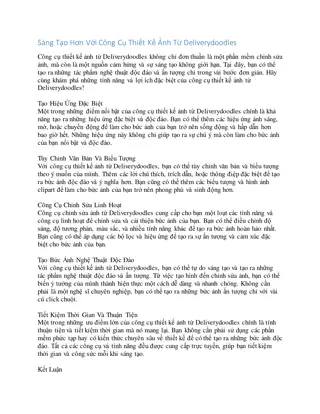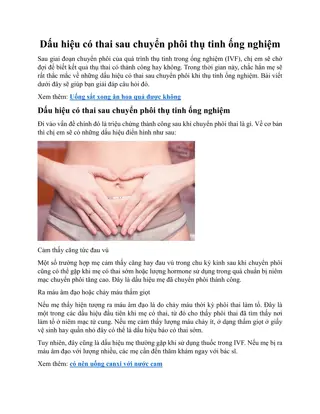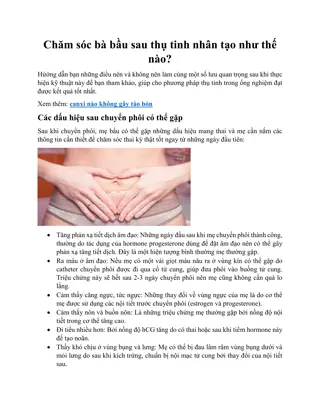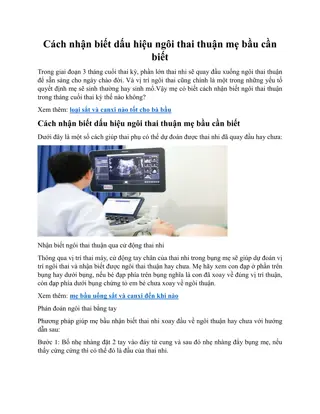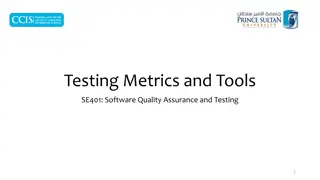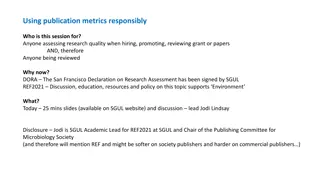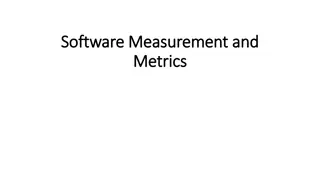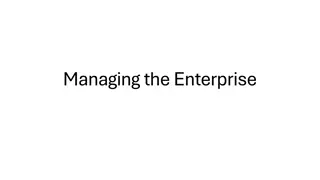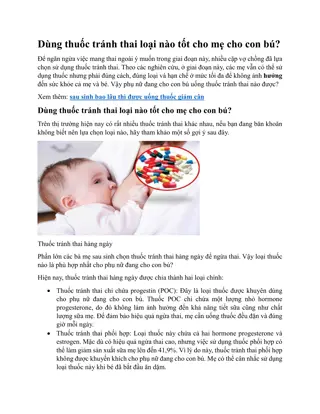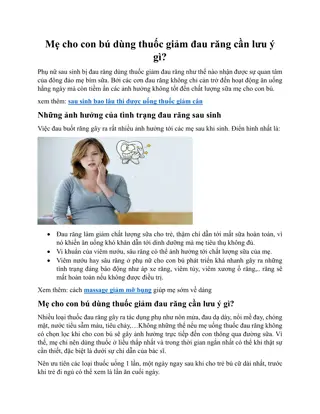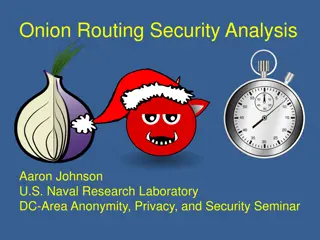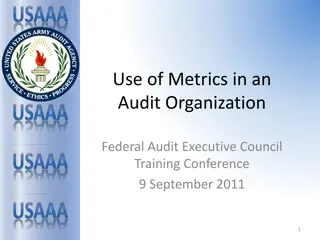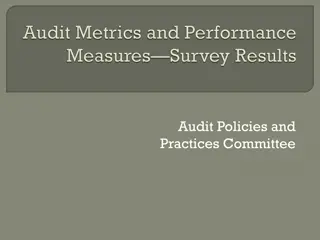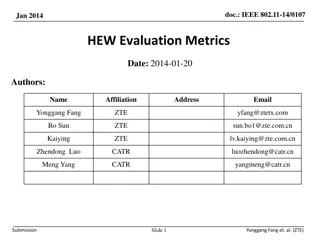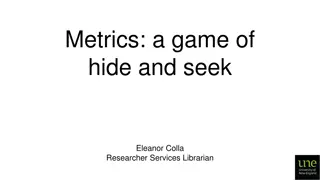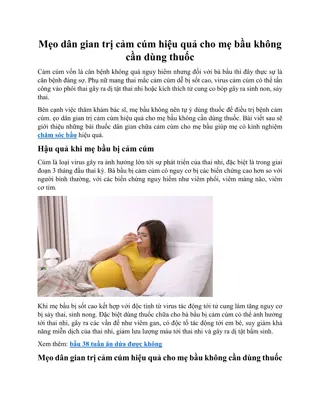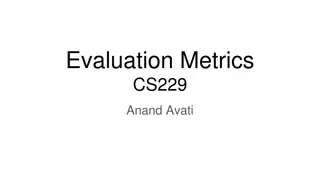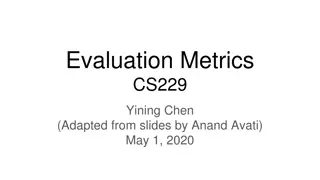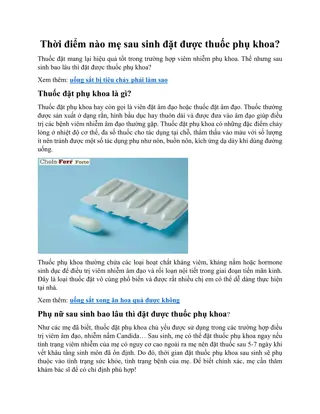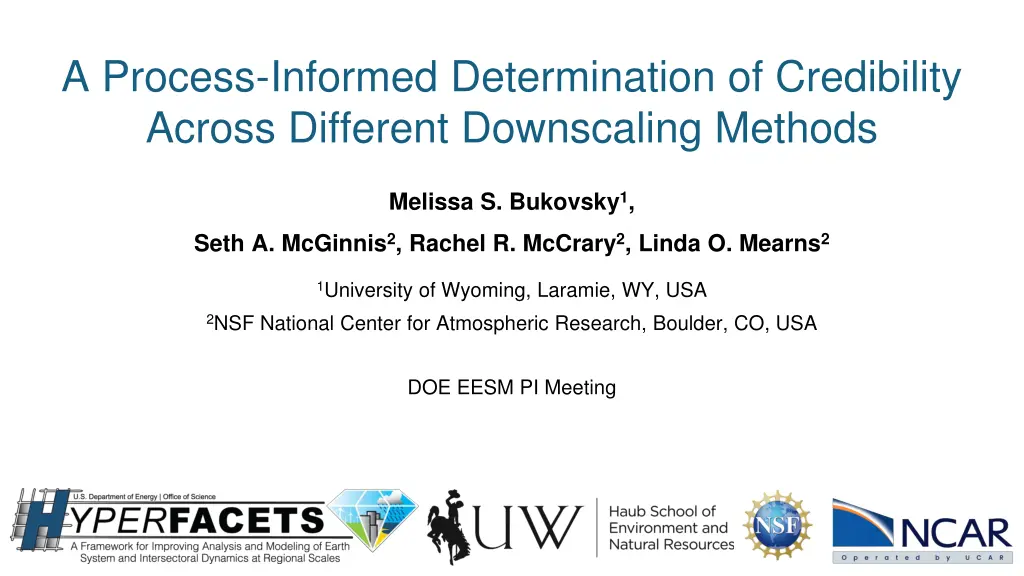
Determination of Credibility in Downscaling Methods
Explore a process-informed approach to evaluate credibility across different downscaling methods for precipitation occurrence in May. The study compares GCMs, statistical methods, and dynamical downscaling to understand wet/dry day patterns and factors influencing precipitation.
Download Presentation

Please find below an Image/Link to download the presentation.
The content on the website is provided AS IS for your information and personal use only. It may not be sold, licensed, or shared on other websites without obtaining consent from the author. If you encounter any issues during the download, it is possible that the publisher has removed the file from their server.
You are allowed to download the files provided on this website for personal or commercial use, subject to the condition that they are used lawfully. All files are the property of their respective owners.
The content on the website is provided AS IS for your information and personal use only. It may not be sold, licensed, or shared on other websites without obtaining consent from the author.
E N D
Presentation Transcript
A Process-Informed Determination of Credibility Across Different Downscaling Methods Melissa S. Bukovsky1, Seth A. McGinnis2, Rachel R. McCrary2, Linda O. Mearns2 1University of Wyoming, Laramie, WY, USA 2NSF National Center for Atmospheric Research, Boulder, CO, USA DOE EESM PI Meeting
Models/Methods No downscaling (just GCMs) Raw MPI-ESM-LR, GFDL-ESM2M, HadGEM2-ES Dynamical (NA-CORDEX) RegCM4 WRF (nudged) Statistical spatial CNN (basic U-Net)* LOCA* Statistical point SDSM (multivariate regression)* qdm (quantile delta mapping)
May wet / dry days @ 98W, 36N Focus on wet/dry day occurrence & the ingredients for precipitation, in May in one location. dr y moist wet Thresholds: Wet > 3mm/day Dry < 0.254mm obs hist rcp85 < trace > 3mm This focus: Simplifies the problem Reduces influence of model intensity bias Focuses on atmospheric setup for precipitation MPI GFDL HadGEM 3 CMIP5-era GCMs
Observed May Wet-Day Climatology, 1980-2005 We evaluated precipitation occurrence in May in the Southern Great Plains (SGP) a) b) Precipitation at this test point ( ) results from a combination of processes that provide moisture & lift: a) Moisture advection by SGP low-level jet b) Upstream of an upper-level trough in the jetstream, ahead of a jet max. c) Upstream of mid-level trough. d) Diagram view of a-c d) c) Do the downscaling methods rain on days when it makes sense for it to rain?
Observed May Wet-Day Climatology, 1980-2005 a) b) Comparison methods: GCM large-scale forcing + precipitation in GCMs GCM large-scale forcing + statistical method wet days RCM large-scale forcing + RCM wet days d) c)
raw GCM 850-mb Q-flux anomaly 700-mb T & Z anomaly 250-mb winds To evaluate credibility, we average upper-level conditions on test-point wet-days. MPI (top) GFDL (middle) Okay but weak, messy Note: more wet days HadGEM (bottom) Weak moisture flux Poor mid-level spatial pattern Jet stream shifted N This baseline credibility is inherited by all downscaling methods.
RegCM4 850-mb Q-flux anomaly 700-mb T & Z anomaly 250-mb winds Dynamical downscaling can improve on bad GCM inputs. GOOD: ALL All 3 downscaled GCM simulations now show strong moisture flux anomaly & sensible spatial patterns and magnitudes Jetstream placement has also been improved Note: WRF can t fix the jet stream to the same extent because those simulations are nudged for wavelengths > 2000km
CNN 850-mb Q-flux anomaly 700-mb T & Z anomaly 250-mb winds Complex statistical downscaling can make things worse. CNN exaggerates the patterns & inherited credibility. MPI still GOOD GFDL now BAD HadGEM VERY BAD Statistical methods often do poorly when asked to extrapolate beyond the data they were trained on.
We summarize the wet-day composite plots with spatial correlation and scaled MAE vs obs All methods perform well (high cor, low MAE) when the GCM is good (blue) Dynamical methods ( ) can improve on the parent GCMs Simple point-based statistical methods ( | ~ ) stick close to the parent GCM When the GCM is bad (red), complex statistical methods (crossed symbols) can reduce already-low credibility Subset for example purposes, all fields from previous slides completed ?
Then we metricized this. CNN, LOCA, and SDSM can perform worse than random noise (dummy method) when downscaling poorly performing bad GCMs (e.g., HadGEM), and often perform considerably worse when downscaling moderately performing ugly GCMs (e.g.,GFDL). However, for well performing GCMs (MPI), they also perform well and are as credible as the dynamical downscaling methods, but only for well performing good GCMs. Simpler statistical methods, qdm and simple, inherit the credibility of the GCM. RCMs add value.
Then we metricized this. CNN, LOCA, and SDSM can perform worse than random noise (dummy method) when downscaling poorly performing bad GCMs (e.g., HadGEM), and often perform considerably worse when downscaling moderately performing ugly GCMs (e.g.,GFDL). However, for well performing GCMs (MPI), they also perform well and are as credible as the dynamical downscaling methods, but only for well performing good GCMs. Simpler statistical methods, qdm and simple, inherit the credibility of the GCM. RCMs add value.
SUMMARY The output from a downscaling method can be more or less credible based on how it responds to the input errors. Here: All methods perform well when the GCM is good. Dynamical methods can improve on the parent GCM s credibility. Simple point-based statistical methods stick close to the parent GCM. When the GCM has low credibility, complex statistical methods can make it even worse. These results suggest the complex statistical methods warrant further scrutiny. What do these results mean for the projections from these methods? An environment undergoing climate change might not be that different from one that is shifted due to bias. Projections inherit historic credibility. See paper for additional conclusions/discussion regarding projections of future climate. This is an example of a framework. There s room for expansion. These results may not hold everywhere.
DISCUSSION To generalize this framework: Pick a downscaled variable that is driven by important resolved processes in a region of interest Stratify data based on values of that variable at a point or over a small sub-region Create composites of the driver variables for the different strata Evaluate composites vs observations & physical process understanding Evaluate plausibility of changes in physical processes Future work: Generalize and automate to weather regimes. Try other regions.
Acknowledgements This work was supported by DOE grant DE-SC0016438 NCAR is sponsored by NSF under Cooperative Agreement #1852977 DoD ESTCP for previous support of the NA-CORDEX data archive WCRP s WGRC & WGCM and the CORDEX modeling groups for data NCAR CISL for computing resources Everyone who has contributed to useful discussions around this topic! Submitted to Earth s Future! Melissa.Bukovsky@uwyo.edu

